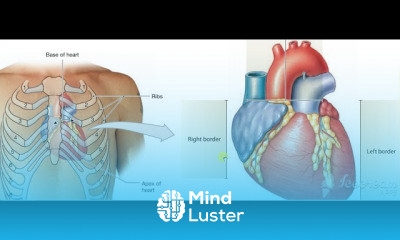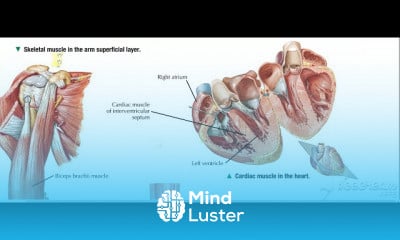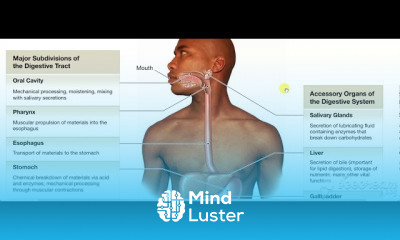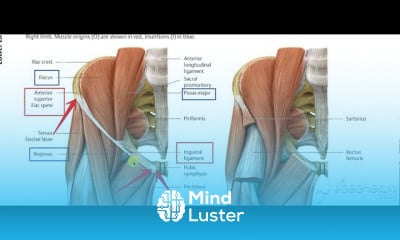Biceps origin 2
Share your inquiries now with community members
Click Here
Sign up Now
Lessons List | 58
Lesson
Show More
Lessons
Comments
Related Courses in Medical
Course Description
The (upper) arm muscles are a group of five muscles located in the region between the shoulder and elbow joints. They are divided into two distinct compartments of the arm. The anterior (flexor) compartment contains the biceps brachii, coracobrachialis and brachialis muscles. The posterior (extensor) compartment contains mainly the triceps brachii muscle. Even though the anconeus muscle is not anatomically located in the arm region, it is often considered to be a part of this muscle group. This is mainly due to the fact that its function is closely related to the triceps brachii muscle.
The prime function of the muscles in the anterior compartment is flexion of the forearm at the elbow joint and adduction of the arm at the shoulder joint. Additional actions of these muscles include flexion of the arm at the shoulder joint and forearm supination. The triceps brachii muscle is the prime extensor of the forearm at the elbow joint, with assistance from the anconeus muscle, but is also capable of weak arm extension and adduction. The muscles in the flexor compartment are mainly innervated by the musculocutaneous nerve, while the extensors are innervated by the radial nerve.
More information
Human body Muscular SystemMuscles
Arm Muscles Overview
Upper arm muscles
Forearm muscles
Arm muscle diagram
Arm muscle conditions
Muscle condition symptoms
Health tips
Overview
Your arms contain many muscles that work together to allow you to perform all sorts of motions and tasks. Each of your arms is composed of your upper arm and forearm. Your upper arm extends from your shoulder to your elbow. Your forearm runs from your elbow to your wrist.
Before learning about the different muscles, it’s important to understand the four major types of movement they’re involved in:
Flexion. This movement brings two body parts closer together, such as your forearm and upper arm.
Extension. This movement increases the space between two body parts. An example of this is straightening your elbow.
Abduction. This refers to moving a body part away from the center of your body, such as lifting your arm out and away from your body.
Adduction. This refers to moving a body part toward the center of your body, such as bringing your arm back in so it rests along your torso.
Upper arm muscles
Your upper arm contains two compartments, known as the anterior compartment and the posterior compartment.
Anterior compartment
The anterior compartment is located in front of your humerus, the main bone of your upper arms.
The muscles of the anterior compartment include:
Biceps brachii. Often referred to as your biceps, this muscle contains two heads that start at the front and back of your shoulder before joining together at your elbow. The end near your elbow flex the forearm, bringing it toward your upper arm. The two heads near your shoulder help with flexion and adduction of your upper arm.
Brachialis. This muscle lies underneath your biceps. It acts as a bridge between your humerus and ulna, one of the main bones of your forearm. It’s involved with the flexing of your forearm.
Coracobrachialis. This muscle is located near your shoulder. It allows adduction of your upper arm and flexion of your shoulder. It also helps to stabilize your humerus within your shoulder joint.
Posterior compartment
The posterior compartment is located behind your humerus and consists of two muscles:
Triceps brachii. This muscle, usually referred to as your triceps, runs along your humerus and allows for the flexion and extension of your forearm. It also helps to stabilize your shoulder joint.
Trends
Network analysis Ankit goyal
Human Resources Management
Compiler Design Principles
Earn money with chatGPT
UX UI design
Web Design for Beginners
Cutting videos in after effects
ArrayLists in C for beginners
UX design career in 2025
Build a profitable trading
Illustrator poster design for beginners
Logo Design
Make money as a freelance designer
UX design essentials
Financial Accounting
Accounting Finance course
Accounting
Advanced graphic design techniques
Making app using chatgpt
AI coding tools for beginners
Recent
AI tools basics for content creation
Creative AI tools
AI tools
AI workflow automation
AI Coding for beginners
Building a website with chatGPT
Build android apps with chatgpt
Making app using chatgpt
Create calculator using chatgpt
Build an android app using chatgpt
E Commerce app using chatgpt
Build flutter apps using chatgpt
Earn money with chatGPT
Create mobile games using chatGPT
AI coding tools for beginners
Ubuntu linux
Install dropbox on ubuntu
Skype account setup
Safari browser
Set zoom in firefox browser


















